In today’s competitive eCommerce landscape, standing out from the crowd and reaching potential customers can be daunting. With countless online stores vying for attention, how can businesses ensure the right audience sees their products?
This is where Comparison Shopping Engines (CSEs) step in, empowering businesses to take control of their online visibility and profitability.
CSEs serve as powerful platforms that connect consumers with products across many retailers. They provide a convenient way for shoppers to compare prices, features, and reviews, ultimately guiding them toward making informed purchasing decisions.
Benefits of Using CSEs for eCommerce Businesses

Increased Traffic & Sales
By listing your products on CSEs, you tap into a vast pool of potential customers actively searching for your offer. This results in a steady influx of qualified leads to your online store, translating into higher conversion rates and sales.
Improved Search Engine Optimization
Leveraging CSEs can bolster your website’s SEO efforts. With your products featured on prominent CSEs, you increase your online visibility and enhance your website’s authority and ranking in search engine results pages (SERPs).
Enhanced Brand Awareness
Through CSEs, your products gain exposure to a broader audience, helping to bolster brand recognition and credibility. Consistent visibility across multiple CSEs reinforces your brand presence and instills trust among potential customers.
Competitive Analysis
CSEs offer security by providing valuable insights into competitor pricing strategies and product offerings. By monitoring competitor activity on these platforms, you can adjust your pricing and marketing tactics to stay ahead of the curve, instilling confidence in your competitive positioning.
Cost-Effective Marketing Strategy
CSEs offer a cost-effective marketing solution, unlike traditional advertising channels that often come with hefty price tags. With pay-per-click (PPC) or cost-per-click (CPC) models, you only pay when users engage with your listings, ensuring optimal return on investment (ROI) and providing a sense of reassurance in your investment decisions.
Related Post: What is the Purpose of Comparison Shopping?
Top 8 Comparison Shopping Engines for eCommerce
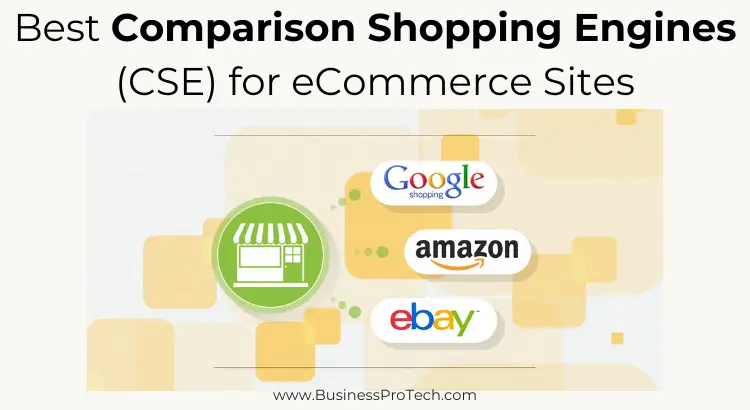
Google Shopping:
Google Shopping offers unparalleled reach and visibility as one of the largest and most widely used CSEs. Its integration into Google search results allows users to easily find and compare products from various retailers, making it a must-have platform for eCommerce businesses.
Amazon:
With millions of active users worldwide, Amazon is the go-to destination for online shopping. By listing your products on Amazon, you gain access to a massive customer base and benefit from its robust search and recommendation algorithms.
eBay:
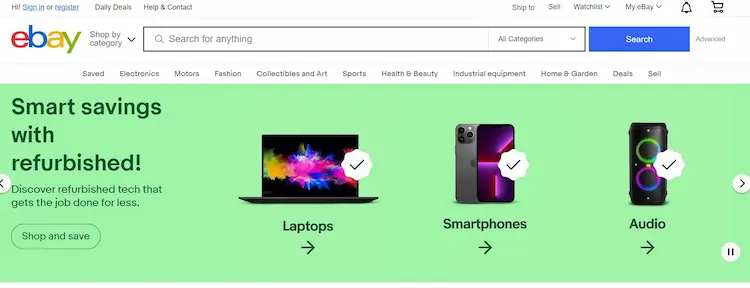
A pioneer in online auctions and marketplace sales, eBay continues attracting millions of shoppers seeking new and used products. By leveraging eBay’s platform, eCommerce businesses can tap into its diverse user base and drive sales through auctions, fixed-price listings, and more.
Bing Shopping:

Powered by Microsoft’s search engine, Bing Shopping offers a competitive alternative to Google Shopping. Its intuitive interface and integration into Bing search results provide a valuable platform for eCommerce businesses looking to expand their reach.
Shopzilla:

Shopzilla is known for its comprehensive product listings and user-friendly interface, Shopzilla helps shoppers find the best deals across various categories. By partnering with Shopzilla, eCommerce businesses can showcase their products to a highly engaged audience and drive traffic to their online stores.
PriceGrabber:
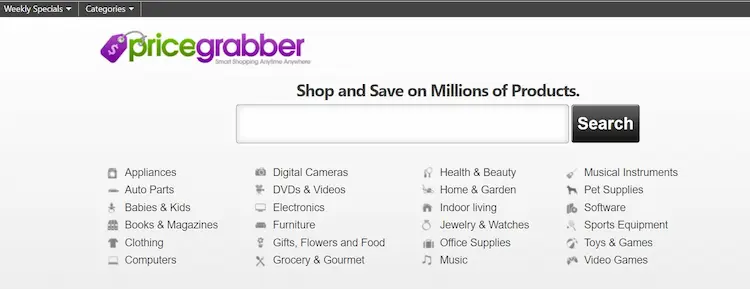
PriceGrabber specializes in helping consumers find the best prices on products from various retailers. By listing your products on PriceGrabber, you can attract bargain-hunting shoppers and increase your sales through its extensive network of partner sites and affiliates.
Nextag:
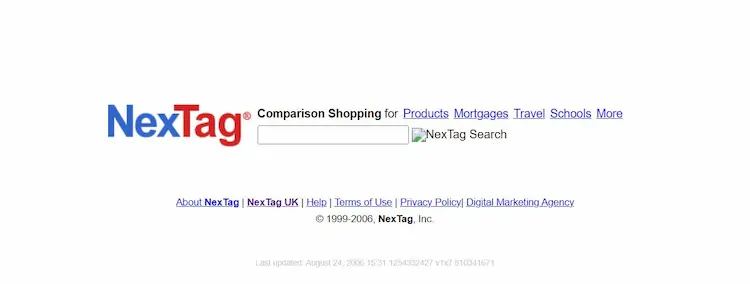
With its focus on real-time price comparisons and product reviews, Nextag empowers shoppers to make informed purchasing decisions. By featuring your products on Nextag, you can connect with savvy consumers seeking the best value for their money.
Pronto:
Pronto offers a user-friendly platform for comparing prices, reading reviews, and discovering new products. By showcasing your products on Pronto, you can reach a targeted audience of shoppers searching for the best deals and discounts.
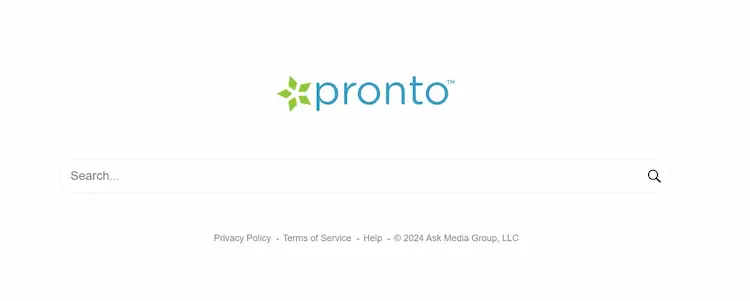
Metrics for Success
- Click-Through Rate (CTR): Track how often users click on your listings after seeing them on a CSE. A high CTR, typically above 2%, indicates your listings effectively grab attention.
- Conversion Rate: Measure the percentage of visitors from a CSE who purchase your store. This reflects how well your website converts interest into sales.
- Return on Investment (ROI): Analyze the revenue generated from CSE traffic compared to the costs associated with using the platform.
Beyond the Top 8 CSE(s)
There are also niche-specific CSEs that cater to particular industries. Consider exploring these options if they align with your product category (e.g., Become.com for electronics).
Beyond Price
While price is a significant factor for many shoppers, CSEs can also help highlight factors like product quality, unique features, and customer service. This allows you to attract customers who value more than just the lowest price.
Data Feed Management
Maintaining accurate and up-to-date product data feeds is crucial for successful CSE listings. Ensure your product information, including descriptions, prices, and images, is current.
Choosing the Right CSE for Your eCommerce Site
Several factors come into play when selecting a CSE(s) for your eCommerce site. Consider your target audience demographics, product category relevance, budget constraints, and platform features.
It’s also important to be aware of potential challenges, such as the time and effort required to maintain accurate product feeds, and the possibility of increased competition. By carefully evaluating these criteria, you can identify the most suitable CSE(s) to maximize your business’s visibility and profitability.
Conclusion
Comparison shopping engines are indispensable tools for e-commerce success in today’s dynamic marketplace. By harnessing the power of CSEs, businesses can drive traffic, boost sales, and enhance brand recognition effectively.
As the eCommerce landscape evolves, staying abreast of emerging trends such as mobile optimization and voice search integration will be vital to maintaining a competitive edge. Embrace the potential of CSEs and unlock new avenues for business growth and expansion.